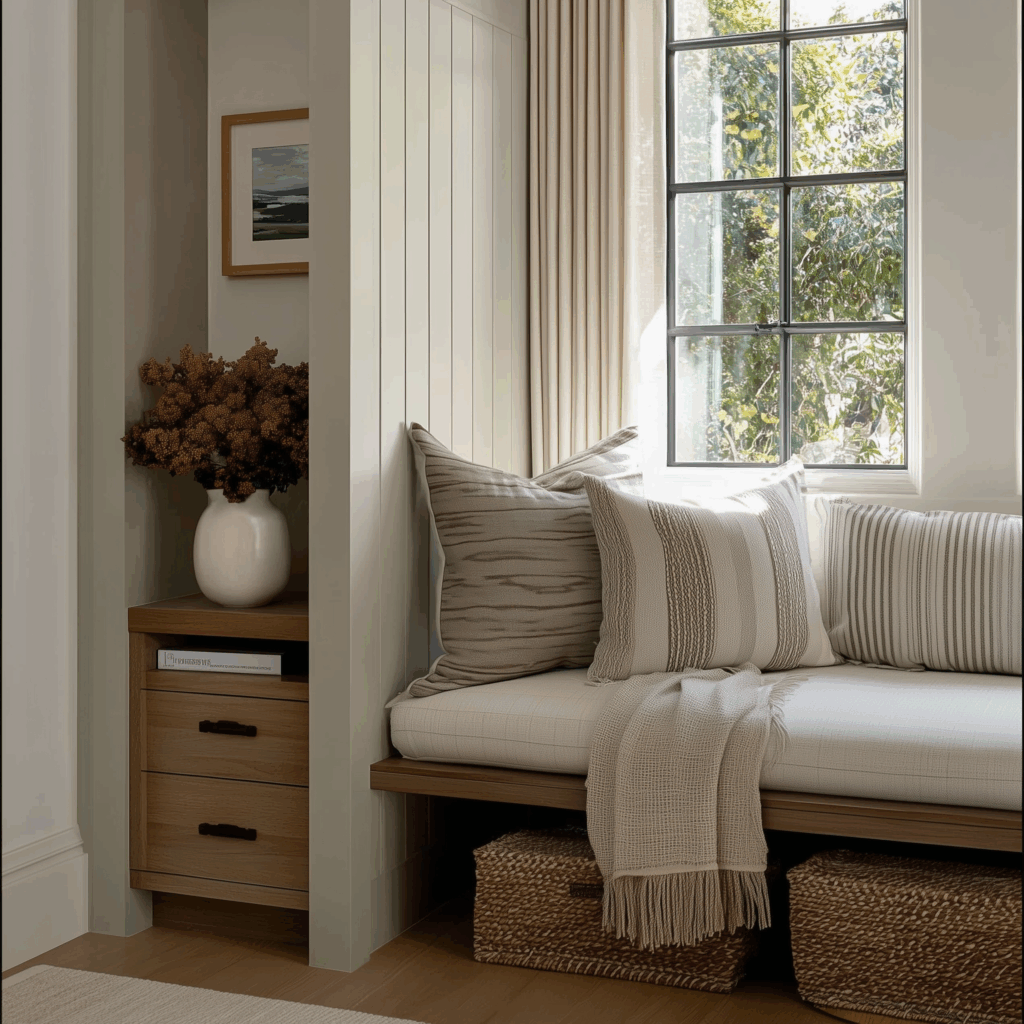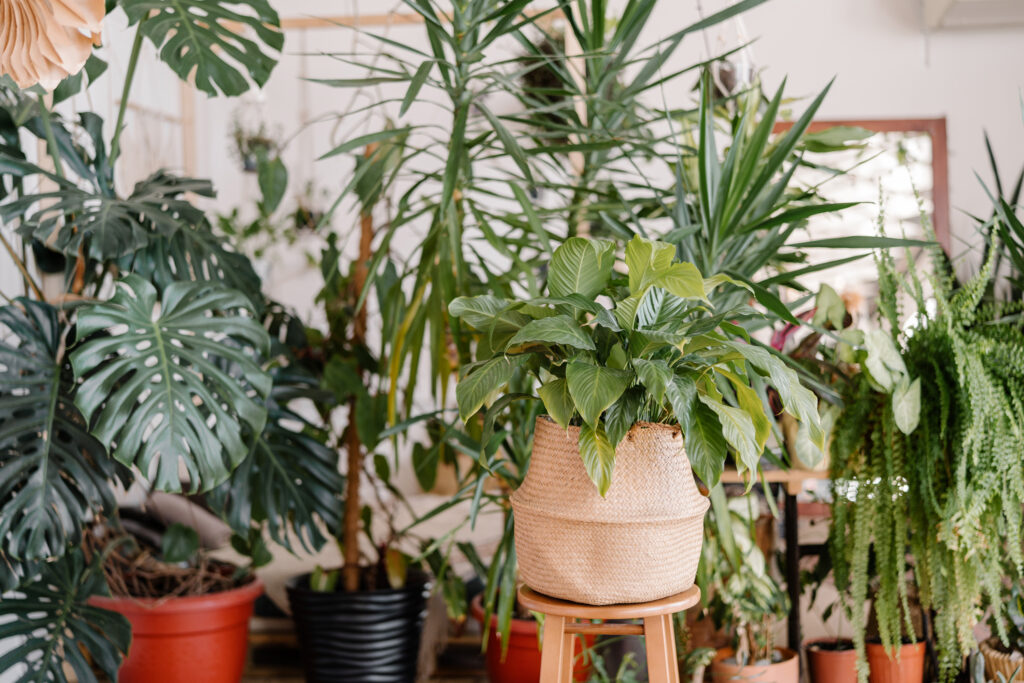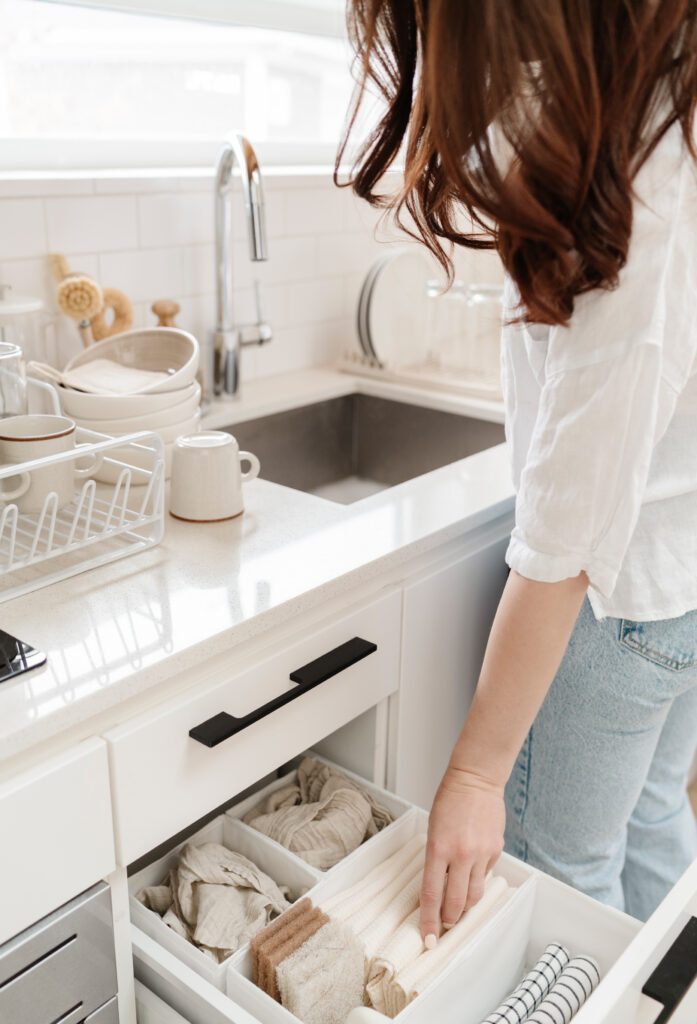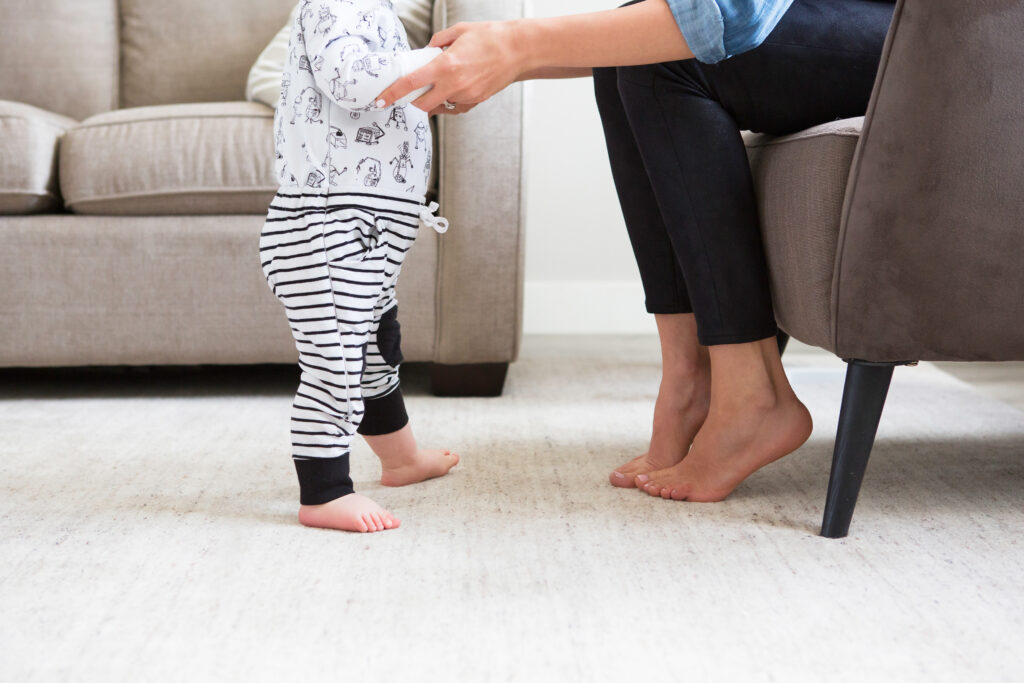You wouldn’t drink from the same glass of water for six months, so why breathe the same air?
As the first crisp fall morning arrives and you reach for that cozy sweater, there’s something else you should be reaching for: a plan to reset your home’s air quality before winter settles in. While we’re busy swapping out throw pillows and lighting candles, most of us completely overlook the invisible element that affects our health more than any design choice we make – the air we breathe.
When we close our windows for the season, we’re essentially creating a sealed environment where everything we’ve introduced into our homes over the past couple of months gets concentrated and recirculated. That new furniture, those cleaning products, even that fresh coat of paint from your summer refresh – they’re all contributing to your indoor air cocktail for the next several months.
But here’s the good news: with some intentional preparation now, you can create an indoor environment that will support your health and well-being all winter long.

Why Fall Air Quality Prep Matters More Than You Might Think
The Sealed Home Effect
When outdoor temperatures drop and we seal our homes tight, we reduce fresh air exchange by up to 90%. That cozy, warm home you’re creating? It can quickly become a concentrated soup of indoor pollutants if you don’t take action now.
Heating System Reactivation
Your HVAC system has been dormant for months, collecting dust, debris, and potentially mold. The moment you fire it up for the first time, it becomes a delivery system throughout your entire home.
Holiday Prep Reality
Between November and January, we’ll be cooking more, burning candles, hosting gatherings, and bringing in fresh greenery – all wonderful for the soul, but potentially challenging for indoor air quality if your home isn’t prepared.
The 5-Minute Air Quality Audit

Before you can improve your air quality, you need to know where you stand. Walk through your home and ask yourself:
In Each Room:
- Do you notice any musty or chemical odors?
- Are there areas where dust accumulates quickly?
- How’s the humidity? (Ideal range is 30-50%)
- When did you last deep clean upholstered furniture?
- Are there any water damage areas, even minor ones?
Red Flags to Note:
- Persistent odors that cleaning doesn’t eliminate
- Condensation on windows (indicates poor ventilation)
- Dust that reappears within days of cleaning
- Family members experiencing more respiratory issues indoors
Strategic Plant Placement for Maximum Air Purification

Plants aren’t just pretty – they’re living air filters. But placement matters more than you might think.
The Powerhouse Plants:
- Snake plants in bedrooms (they release oxygen at night)
- Peace lilies in bathrooms (they love humidity and filter formaldehyde)
- Rubber trees in living areas (excellent for removing airborne toxins)
- Spider plants in kitchens (great for filtering carbon monoxide and formaldehyde)
Strategic Placement Rules:
- Place larger plants near furniture or areas where you spend the most time
- Create “air purification zones” in each main living area
- Don’t forget about air circulation – plants need airflow to work effectively
Pro tip: One plant per 100 square feet is a good starting point, but bigger plants work harder than smaller ones.
HVAC Prep That Goes Beyond Filter Changes
Yes, change your filter – but that’s just the beginning.
The Complete HVAC Reset:
- Professional duct cleaning if it’s been more than 3-5 years
- UV light installation in your HVAC system to kill mold and bacteria
- Humidity control assessment—too dry encourages dust mites, too humid encourages mold
- Seal any ductwork leaks that could be pulling in air from basements, attics, or crawl spaces
DIY HVAC Health Check:
- Clean all vents and registers with a damp cloth
- Check that all vents are unobstructed by furniture or rugs
- Test your system before you need it – don’t wait for the first cold snap
Natural Cleaning Protocols Before You Seal Up

This is your last chance for months to really air out your home after deep cleaning.
The Pre-Winter Deep Clean Schedule:
- Week 1: Upholstery and carpets (rent a steam cleaner or hire professionals)
- Week 2: All hard surfaces with natural, low-VOC cleaners
- Week 3: Windows inside and out (you want maximum light during darker months)
- Week 4: Final air-out with windows wide open before consistently cold weather
Natural Cleaning Arsenal:
- White vinegar and water for glass and hard surfaces
- Baking soda for carpet deodorizing
- Essential oil-infused solutions instead of synthetic fragrances
- Steam cleaning for deep sanitization without chemicals
Creating Fresh Air Pockets in Sealed Homes
Even when it’s too cold to open windows, you can create micro-climates of fresher air.
The Circulation Strategy:
- Cross-ventilation simulation: Use fans to move air between rooms, mimicking natural breezes
- Fresh air exchanges: Even in winter, crack windows for 5-10 minutes daily when possible
- Air purifier placement: Position them where you spend the most time, not just where they look good
Natural Humidity Control:
- Group plants together to create humid microclimates
- Use wool rugs and natural fiber textiles that regulate moisture
- Avoid over-humidifying, which can lead to mold issues
The Materials Matter: What’s Already in Your Home
Fall is the perfect time to audit what you’ve brought into your space and how it might be affecting your air quality.
Common Culprits:
- New furniture: Can off-gas for months or even years
- Synthetic carpets and rugs: Often treated with stain-resistant chemicals
- Conventional paint: Even “dry” paint continues to emit VOCs
- Cleaning products: Check what’s under your sink—many contain respiratory irritants
The Gradual Replacement Strategy:
You don’t need to overhaul everything at once. Focus on:
- Items you use daily (cleaning products, personal care)
- Items in bedrooms (where you spend 6-8 hours breathing)
- Large surface area items (rugs, curtains, furniture)
When to Call in the Professionals
Some air quality issues require expert attention:
- Mold testing if you suspect water damage
- Radon testing especially in basements or lower levels
- Professional air quality assessment if family members have unexplained respiratory issues
- Duct cleaning and sealing for optimal HVAC performance
Remember: investing in professional air quality assessment now can prevent health issues and costly problems later.
Your Fall Air Quality Action Plan
This Week:
- Complete your 5-minute air quality audit
- Schedule HVAC maintenance
- Begin strategic plant shopping
Next Two Weeks:
- Deep clean upholstery and carpets
- Replace synthetic cleaning products with natural alternatives
- Clean all vents and registers
Before First Freeze:
- Complete natural cleaning protocols
- Test all HVAC systems
- Create your winter air circulation plan

The Bottom Line
Creating healthy indoor air quality isn’t just about comfort – it’s about setting the foundation for how you’ll feel physically and mentally throughout the entire winter season. When your air is clean, you sleep better, think more clearly, and get sick less often.
Your home should be your sanctuary, especially during the months when you’ll be spending the most time indoors. By taking these steps now, you’re not just preparing your space – you’re investing in your family’s health and well-being for the entire season ahead.
The best part? Most of these changes also happen to make your home more beautiful. Clean air, thriving plants, and thoughtfully maintained spaces create the kind of environment where both you and your guests naturally want to take a deep breath and settle in.
Ready to create the healthiest, most comfortable winter sanctuary? Start with one room, one change, and build from there. Your lungs – and your family – will thank you.
Looking for personalized guidance on creating a healthier home environment? Our healthy home consultations include comprehensive air quality assessments and material recommendations tailored to your family’s specific needs. You can learn more about our service here!
Curious about working with us?
Our complimentary discovery call is the first step – no pressure, no decisions – just a chance to share more about your project and see if we’re the right fit. Click here to inquire and take the first step toward a beautifully intentional home.
📍 Proudly serving Athens, Georgia, Oconee County, and surrounding communities throughout Northeast Georgia and beyond
💌 Book a complimentary call with us to discuss your project!